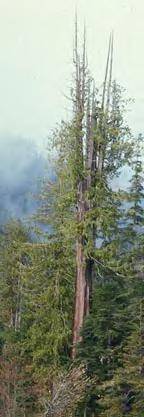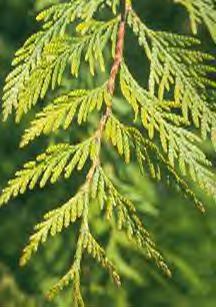|
|
Joining Culture and Studies Tulalip Boys and Girls Club Native American Multimedia Project
New Program Set Up for Indian Students
by Keiko Morris Seattle Times Snohomish County Bureau
 An experiment
in good medicine begins in the five blue-gray portable classrooms behind the Tulalip Boys & Girls Club.
An experiment
in good medicine begins in the five blue-gray portable classrooms behind the Tulalip Boys & Girls Club.
This is where some 60 students in grades six through 12 will take part in a new program with high expectations
and many challenges. Teachers and administrators of the Heritage School, a new alternative middle- and high-school
program in the Marysville School District, hope to give education new meaning and relevance to the lives of their
mostly Native American students.
The dreams are big.
This will be the place where tribal children and non-Native American students can learn the culture, language and
history of the tribes; where Native American students who felt out of place in the district's other schools can
build their self-esteem; and where teachers and the community find remedies to truancy and low academic achievement
- long-standing problems among the district's Native American student population.
"This is something we in our community have been waiting to do for years," said Don Hatch, a Marysville
School Board member, operations director of the Tulalip Boys & Girls Club and Tulalip tribal member.
"You have to have the education to survive, but that doesn't mean the culture cannot run parallel with the
curriculum. This is more medicine for them (students) in their heart and mind to help them succeed," Hatch
said.
 Heritage School staff hope that adopting a project-based, hands-on model of teaching called expeditionary
learning will hook these youths into coming to and staying in school. Students and teachers will work on various
projects and themes throughout the year.
Heritage School staff hope that adopting a project-based, hands-on model of teaching called expeditionary
learning will hook these youths into coming to and staying in school. Students and teachers will work on various
projects and themes throughout the year.
The ultimate goal is that the Heritage School, a joint venture between the tribes and the school district, will
evolve into a full-service school with all the usual elective courses and extracurricular activities. School officials
emphasize their hope that the school will attract non-native and Native American students of varying academic abilities.
But for now, students enrolled in the program come primarily from the reservation's two former alternative schools,
which merged to form the new school.
The start of a new school and a new program has brewed a concoction of excitement and uncertainty among school
staff. Principal Cherie Farris acknowledged the changes for some of the students will be tough.
Tulalip Option School and Tulalip Learning Center - the reservation's alternative middle and high schools - were
seen more as a place for kids who weren't doing well in other schools because of academic performance or behavioral
problems. Kids attended school about three hours a day, four days a week, logging the rest of their school hours
doing class work at home to make up credit.
Heritage School is still designated as an alternative option, but students are required to attend school six hours
a day - 9 a.m. to 3 p.m. - five days a week. Classes are also more structured, Farris said.
"Being here all day will be hard," Farris said. "But we are going to develop a work ethic where
this is a job."
As an example of the expeditionary learning model, students this year will study the ways cedar traditionally was
used by the tribes while also learning the ritual of blessing the tree and giving thanks before taking it. In their
science class, they might use cedar as a specimen while learning methods of observation and classification. In
social studies and English, students might write research papers on how other cultures use cedar, gathering information
from the Internet or a class trip to other reservations.
Carving also will stand as a centerpiece for many daily lessons. This extended two-year chapter will culminate
with students building a canoe.
At the end of every long-term research task, students will present their discoveries to community members outside
the school.
"Reading, writing, even math and science can be tied into this," said Sheryl Fryberg, Indian Education
Coordinator.
"I don't think many of these kids understand just how important cedar is a part of Tulalip life," Farris
said. "Now you go to Kmart and buy what you need."
 The Lushootseed language, once spoken in many dialects by Puget Sound tribes, is an element in
the new curriculum and has long been seen as a critical part of preserving the tribes' culture. The Tulalip Tribe
Cultural Resource Center will provide the school with a language teacher.
The Lushootseed language, once spoken in many dialects by Puget Sound tribes, is an element in
the new curriculum and has long been seen as a critical part of preserving the tribes' culture. The Tulalip Tribe
Cultural Resource Center will provide the school with a language teacher.
"You can't maintain your culture, and who you are as a people, if you can't maintain your language,"
Fryberg said. "In the past, we were an oral culture. History was passed down through stories and legends."
The concept of integrating the tribes' culture into the curriculum is not new. The district fashioned various incarnations
of the idea, beginning in the 1970s with the Salmon Project - an alternative high school where Tulalip students
who fished into September could make up credits. The Salmon Project became the Tulalip Learning Center, and, five
years ago, the district opened Tulalip Option school.
Both places had tried to open the classroom experience to tribal business, traditions and history. But that segment
of the program was not well-defined and consistent, Fryberg explained.
Three years in the making, the idea for the Heritage School gained momentum this year when the Tulalip Tribes stepped
up with financial support. The tribes bought two new portables and paid for the moving and construction costs.
The tribes financed the plumbing and power installation and offered free the use of the land. Tribal money played
a crucial part in training the staff in the expeditionary learning model.
Heritage students also will use the Tulalip Boys & Girls Club as an extension of the portables. Students will
be able to research and write their projects in the club's computer labs, which have 42 computers. The Boys &
Girls Club also is offering use of its cafeteria and gymnasium.
Hatch estimates the tribes put up about $200,000 to start the school and predicts there will be more to come.
In this feverish atmosphere of educational reform, all eyes will be watching the Heritage School's progress and
whether the program can engage students enough to help them meet state standards.
"Everyone's going to be looking real critically," said Richard Eisenhauer, Marysville schools superintendent.
"Are we just out there playing around, or is it addressing the academic deficiencies that have been out there?
http://www.codetalk.fed.us/planet/tulalipx.html
http://indian.monterey.edu/suquamish/aframe2.html
![]()
|
|
| Canku Ota is a free Newsletter celebrating Native America, its traditions and accomplishments . We do not provide subscriber or visitor names to anyone. Some articles presented in Canku Ota may contain copyright material. We have received appropriate permissions for republishing any articles. Material appearing here is distributed without profit or monetary gain to those who have expressed an interest. This is in accordance with Title 17 U.S.C. section 107. |
|
Canku Ota is a copyright of Vicki Lockard and Paul Barry. |
|